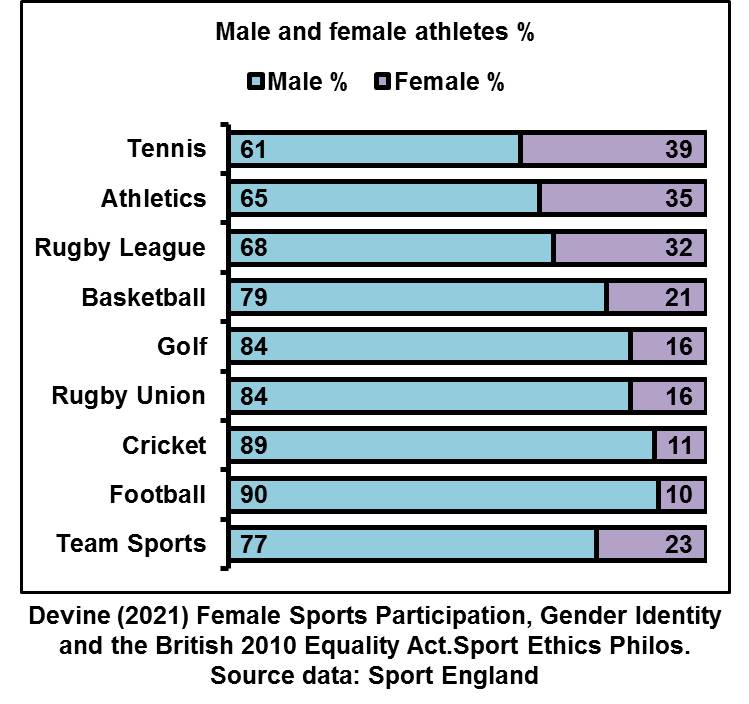
Richard Budgett, medical director of the IOC, is saying here that sports performance is not proportional to natural (“endogenous”) testosterone level.
What do we know?
What do we know?
https://twitter.com/seaningle/status/1460666490101936135
1. Males are, as a class, better athletes than females.
2. Males have, as a class, higher testosterone (T) levels than females.
3. T has well-researched effects on sports relevant physiology.
4. The effects of T on sports relevant physiology happens during male puberty.
2. Males have, as a class, higher testosterone (T) levels than females.
3. T has well-researched effects on sports relevant physiology.
4. The effects of T on sports relevant physiology happens during male puberty.
So what on earth can he possibly mean when he says that performance is not proportional to natural T level? More, that is it *obviously* not and anyway who thinks otherwise must be stupid or something.
Is he saying that T is not the driver of sex-specific differences in sports performance? I don’t think so because that would be a stupid thing to say, and he is a medic and therefore unlikely to be stupid.
I’ll confess to an assumption here, that Budgett actually acknowledges that males have a performance advantage over females. I think it reasonable, given that the guideline mentions – once – fairness for females.
If he thinks that T is not the driver of sex-specific differences in sports performance, then I’d like to ask him what he thinks that driver is.
Because there *is* a driver that makes males bigger and stronger (and therefore better at sports) than females, as a basic feature of our sexually-dimorphic species.
If Budgett thinks that the driver is not T, what is?
If Budgett thinks that the driver is not T, what is?
Why might Budgett think that T is not the key driver of sports relevant physiology in males?
Budgett might have in mind World Athletics data mapping T levels to athlete results. Give no relationship between higher T and those who come first, he might think that means T makes no difference to performance.
This is because he has forgotten – or conveniently ignored – that the T levels and performance data were analysed *within sex*. Females with high T *for females* do not outperform females with low T *for females*, and it’s the same pattern for males.
Budgett may believe that because a female with 2nM T runs the same as a female with 1nM T and a male with 25nM T runs the same as a male with 15nM T, “performance is not proportional to natural T level”.
If this is the case, we have to assume that Budgett cannot see the difference between the number ranges 1-2 and 15-25, nor how, in reference to T levels, they might map to performance *between sexes*.
Budgett might also have in mind, from various studies, the existence of males who are hugely successful athletes with inexplicably low T.
Perhaps this is why he thinks that natural T levels are not proportional to advantage?
Perhaps this is why he thinks that natural T levels are not proportional to advantage?
For this idea to fly, Budgett must believe that a sample taken from an athlete is representative of that athlete’s T level *over their whole life*, including their development during puberty.
That’s some extrapolation.
That’s some extrapolation.
Budgett, as a medic, must understand the various disease, infection and injury reasons why some males may temporarily experience low T, and how it changes with age.
As the medical director of the IOC, he must also understand the various sporting reasons – intensive exercise, doping cycles - that can cause males to experience periods of low T.
In the studies Budgett may have in mind, there is, in fact, a disproportionate number of males with low T in elite sporting competition (compared with general population).
But if I can imagine why male power lifters – an intensive, non-Olympic sport rife with doping – have lower T levels than my husband, why can’t Budgett?
Perhaps beguiling Budgett is the conclusions of such studies that T is not the driver of performance, but rather that the male athletes consistently have higher muscle mass than equivalently-trained, same-sport females.
And so we are facepalming our way back to the beginning.
If not T, what biological process drives males to pile on this excess muscle (among other developmental changes) compared to females, and become bigger and stronger athletes?
If not T, what biological process drives males to pile on this excess muscle (among other developmental changes) compared to females, and become bigger and stronger athletes?
Budgett is ignoring a wealth of biological data supporting the effect of T on sporting performance differences between males and females, and choosing as an explanation for male performance advantage some Unknown Thing instead.
This is a problem for those who think the driver is not the thing that a wealth of biological research says it is, but is, in fact, some Unknown Thing, because that Unknown Thing cannot be accounted for in sports regulations.
Not being able to account for the Unknown Thing does not mean that the results of that Unknown Thing – bigger and stronger males – suddenly stop happening.
Not being able to test for something – the Unknown Thing – does not mean one has to declare a free for all until we know what it is.
Yet that is what Budgett and the IOC have done, and that is why testosterone rules have been dropped from the IOC guidelines.
Budgett's suggestion that is it *obviously not T* is, in fact, a stupid thing to say.
• • •
Missing some Tweet in this thread? You can try to
force a refresh







